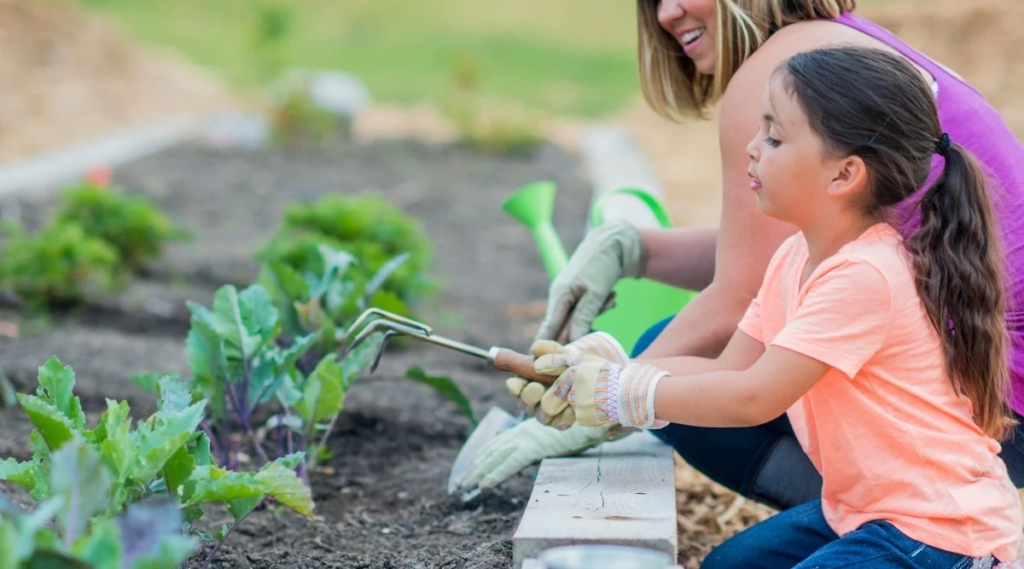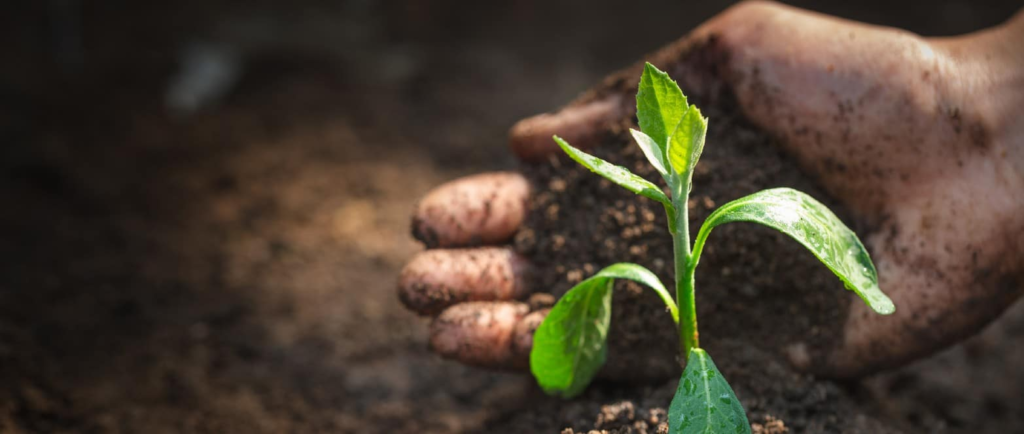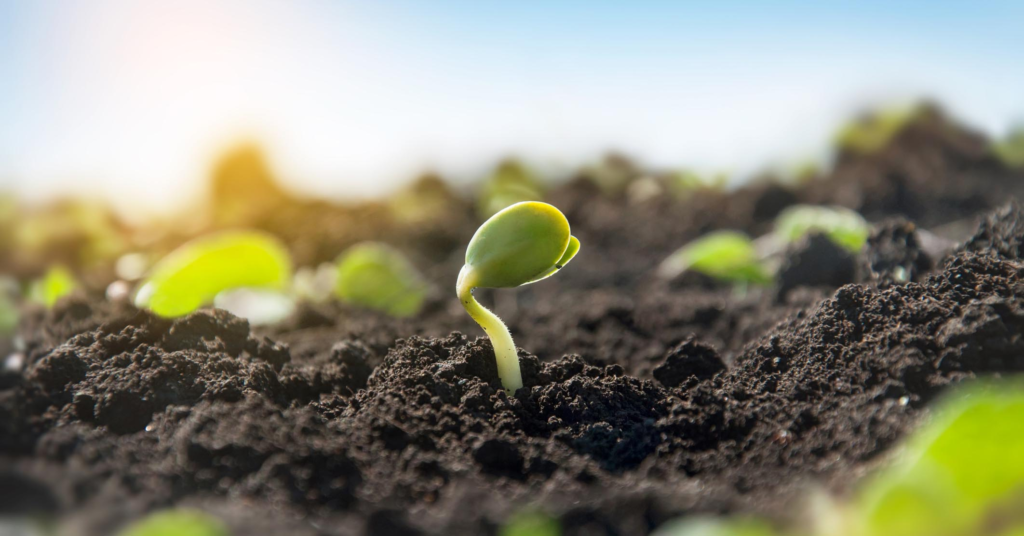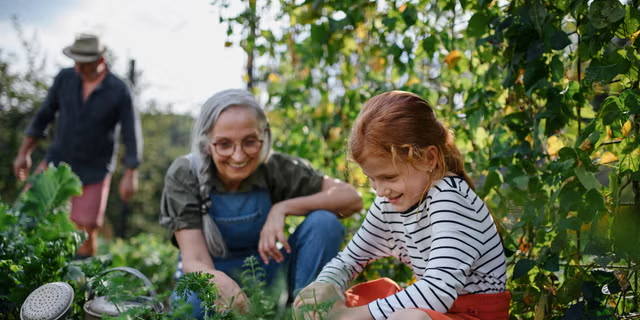Gardening is a rewarding hobby that not only brings joy and beauty to our lives but also has the potential to make a positive impact on the environment. Sustainable gardening practices are essential for those who want to nurture their gardens in an eco-friendly way. By adopting sustainable methods, gardeners can reduce waste, conserve resources, and create habitats that support biodiversity. This comprehensive guide explores various sustainable gardening practices that can help you cultivate a greener thumb.
1. Composting: Turning Waste into Nutrient-Rich Soil

Composting is a cornerstone of sustainable gardening. It involves recycling organic waste materials into a rich, nutrient-dense soil amendment that can enhance plant growth.
A. Benefits of Composting
- Reduces Waste: Composting diverts kitchen scraps and yard waste from landfills, reducing methane emissions.
- Improves Soil Health: Compost enriches the soil with essential nutrients and beneficial microorganisms.
- Enhances Water Retention: Compost improves soil structure, helping it retain moisture and reducing the need for frequent watering.
B. How to Compost
- Choose a Composting Method: Options include traditional compost bins, tumblers, and vermicomposting (using worms).
- Collect Organic Materials: Include vegetable scraps, fruit peels, coffee grounds, eggshells, yard trimmings, and leaves.
- Balance Green and Brown Materials: Greens (nitrogen-rich) include kitchen scraps and fresh grass clippings. Browns (carbon-rich) include leaves, straw, and cardboard.
- Maintain Your Compost Pile: Turn the pile regularly to aerate it and speed up decomposition. Keep it moist but not waterlogged.
- Harvest Finished Compost: After several months, the compost will become dark, crumbly, and earthy-smelling. Use it to enrich garden beds and potted plants.
2. Water Conservation: Efficient Use of a Precious Resource

Water is a vital resource, and conserving it is crucial for sustainable gardening. Efficient watering practices can help reduce water waste and ensure plants receive the moisture they need.
A. Mulching
Mulching involves spreading organic or inorganic materials on the soil surface to conserve moisture, suppress weeds, and regulate soil temperature.
- Organic Mulch: Use straw, wood chips, leaves, or grass clippings. These materials decompose over time, enriching the soil.
- Inorganic Mulch: Gravel, stones, and landscape fabric are durable options that do not decompose.
B. Drip Irrigation and Soaker Hoses

Drip irrigation systems and soaker hoses deliver water directly to the plant roots, minimizing evaporation and runoff.
- Installation: Lay the hoses or drip lines along plant rows or beds. Connect them to a timer to automate watering schedules.
- Benefits: These systems reduce water usage and promote deep root growth.
C. Rainwater Harvesting

Collecting and using rainwater is an effective way to conserve potable water and reduce your water bill.
- Rain Barrels: Install rain barrels at downspouts to collect and store rainwater.
- Rain Gardens: Design garden areas that capture and filter rainwater, allowing it to infiltrate the ground slowly.
D. Drought-Tolerant Plants

Selecting plants that thrive in dry conditions can reduce the need for supplemental watering.
- Native Plants: Native species are adapted to local climate conditions and often require less water.
- Xeriscaping: This landscaping method focuses on drought-resistant plants and efficient water use.
3. Organic Pest Control: Protecting Plants Naturally

Managing pests without synthetic chemicals is a key aspect of sustainable gardening. Organic pest control methods help maintain a healthy garden ecosystem and protect beneficial insects.
A. Beneficial Insects
Encouraging beneficial insects can naturally control pest populations.
- Ladybugs: These insects prey on aphids, mites, and other soft-bodied pests.
- Bees and Butterflies: Pollinators are crucial for plant reproduction. Plant flowers that attract these insects.
- Predatory Wasps: These wasps control caterpillars, beetles, and other pests.
B. Natural Pesticides
Organic pesticides, derived from natural sources, can be effective against pests without harming the environment.
- Neem Oil: Extracted from neem trees, this oil disrupts insect growth and repels pests.
- Diatomaceous Earth: This powder, made from fossilized algae, damages the exoskeletons of insects.
- Insecticidal Soap: These soaps suffocate soft-bodied insects like aphids and mites.
C. Companion Planting

Planting certain crops together can deter pests and improve plant health.
- Marigolds: These flowers repel nematodes, aphids, and whiteflies.
- Basil: Planting basil near tomatoes can repel flies and mosquitoes.
- Nasturtiums: These flowers attract aphids, diverting them from other plants.
D. Physical Barriers
Using physical barriers can prevent pests from reaching your plants.
- Row Covers: Lightweight fabric covers protect plants from insects and harsh weather.
- Netting: Use fine mesh netting to keep birds and insects away from fruit and vegetable crops.
- Traps: Set traps for pests like slugs and snails using beer or copper tape.
4. Soil Health: Building a Strong Foundation

Healthy soil is the foundation of a thriving garden. Sustainable practices focus on improving soil fertility, structure, and biodiversity.
A. Soil Testing
Conducting a soil test can provide valuable information about your soil’s pH, nutrient levels, and composition.
- DIY Kits: Purchase a soil testing kit from a garden center.
- Professional Testing: Send a soil sample to a laboratory for detailed analysis.
B. Organic Fertilizers

Organic fertilizers, derived from natural sources, release nutrients slowly and improve soil health over time.
- Compost: Rich in nutrients and beneficial microorganisms, compost is an excellent soil amendment.
- Manure: Well-aged manure from herbivores adds organic matter and nutrients to the soil.
- Bone Meal: This phosphorus-rich fertilizer supports root development and flowering.
C. Crop Rotation

Rotating crops helps prevent soil depletion and reduces the risk of pests and diseases.
- Rotation Plan: Develop a multi-year plan that rotates plant families to different areas of the garden each year.
- Cover Crops: Plant cover crops like clover or rye during the off-season to improve soil structure and fertility.
D. No-Till Gardening
No-till gardening minimizes soil disturbance, preserving its structure and promoting biodiversity.
- Mulching: Apply a thick layer of mulch to suppress weeds and retain moisture.
- Planting: Use a garden fork or broadfork to aerate the soil gently before planting.
5. Supporting Biodiversity: Creating a Garden Habitat
A biodiverse garden supports a wide range of plants, animals, and microorganisms, contributing to a balanced and resilient ecosystem.
A. Native Plants
Native plants are well-adapted to local conditions and support native wildlife.
- Wildflowers: Plant a mix of native wildflowers to attract pollinators and beneficial insects.
- Shrubs and Trees: Include native shrubs and trees to provide shelter and food for birds and other animals.
B. Pollinator Gardens

Creating habitats for pollinators like bees, butterflies, and hummingbirds is essential for plant reproduction.
- Flower Variety: Plant a variety of flowers that bloom at different times to provide continuous food sources.
- Nesting Sites: Provide nesting sites for bees, such as bee houses or undisturbed soil patches.
C. Wildlife Habitats
Incorporate features that attract and support wildlife.
- Water Sources: Install birdbaths, ponds, or small water features to provide drinking water.
- Shelter: Create shelters using logs, rock piles, and brush heaps for small animals and insects.
- Food Plants: Plant fruit-bearing trees, shrubs, and vines to provide food for birds and other wildlife.
D. Avoiding Chemical Pesticides and Fertilizers

Reducing or eliminating the use of synthetic chemicals helps protect garden biodiversity.
- Organic Alternatives: Use organic pesticides and fertilizers to minimize harm to beneficial organisms.
- Integrated Pest Management (IPM): Employ a combination of cultural, biological, and mechanical methods to manage pests sustainably.
Conclusion
Sustainable gardening practices not only benefit your garden but also contribute to the overall health of the environment. By composting, conserving water, using organic pest control, improving soil health, and supporting biodiversity, you can cultivate a beautiful and eco-friendly garden. Adopting these practices helps reduce waste, conserve resources, and create habitats that support a diverse range of plants and animals. Embrace sustainable gardening and enjoy the rewards of a greener thumb and a healthier planet.
For more, visit athenasgardens.com
FAQ: Sustainable Gardening: Eco-Friendly Practices for a Greener Thumb
Q1: What is sustainable gardening?
A1: Sustainable gardening involves using eco-friendly practices to cultivate a garden in a way that conserves resources, reduces waste, and supports biodiversity. It focuses on creating a balanced and resilient ecosystem that benefits both the gardener and the environment.
Q2: How does composting benefit my garden and the environment?
A2: Composting turns organic waste into nutrient-rich soil that enhances plant growth. It reduces waste sent to landfills, lowers methane emissions, improves soil health, and increases water retention in the soil.
Q3: What materials can I compost?
A3: You can compost a variety of organic materials including vegetable scraps, fruit peels, coffee grounds, eggshells, yard trimmings, leaves, and cardboard. Avoid composting meat, dairy, and oily foods as they can attract pests and create odors.
Q4: How can I conserve water in my garden?
A4: Conserve water by using mulch, installing drip irrigation systems, harvesting rainwater, and choosing drought-tolerant plants. Mulching helps retain soil moisture, while drip irrigation delivers water directly to plant roots, reducing evaporation and runoff.
Q5: What are the benefits of using native plants in my garden?
A5: Native plants are adapted to local climate conditions, often requiring less water and maintenance. They support local wildlife, including pollinators and beneficial insects, and help maintain the natural ecosystem.
Q6: What is organic pest control, and why is it important?
A6: Organic pest control involves using natural methods to manage garden pests without synthetic chemicals. It protects beneficial insects, maintains soil health, and reduces chemical runoff into waterways. Methods include encouraging beneficial insects, using natural pesticides, and companion planting.
Q7: How can I improve my soil health sustainably?
A7: Improve soil health by conducting soil tests, using organic fertilizers like compost and manure, practicing crop rotation, and adopting no-till gardening methods. These practices enhance soil fertility, structure, and biodiversity.
Q8: What is companion planting, and how does it work?
A8: Companion planting involves growing certain plants together to deter pests and improve plant health. For example, planting marigolds can repel nematodes, and basil can repel flies and mosquitoes when grown near tomatoes. It enhances garden productivity and reduces the need for chemical pest control.
Q9: How can I support biodiversity in my garden?
A9: Support biodiversity by planting a variety of native plants, creating pollinator gardens, providing water sources and shelters for wildlife, and avoiding chemical pesticides and fertilizers. These actions create a habitat that supports a wide range of plants, animals, and microorganisms.
Q10: What are some effective ways to harvest rainwater?
A10: Effective ways to harvest rainwater include installing rain barrels at downspouts to collect roof runoff and creating rain gardens that capture and filter rainwater. These methods help conserve potable water and reduce stormwater runoff.
Q11: What are some drought-tolerant plants I can use in my garden?
A11: Drought-tolerant plants include succulents, lavender, rosemary, yarrow, and many native grasses and wildflowers. These plants require less water and are well-suited for xeriscaping, a landscaping method that emphasizes water efficiency.
Q12: How can I create a pollinator-friendly garden?
A12: Create a pollinator-friendly garden by planting a variety of flowers that bloom at different times, providing continuous food sources. Include plants like milkweed, coneflowers, and sunflowers. Avoid using pesticides and provide nesting sites for bees and butterflies.
Q13: What is no-till gardening, and why is it beneficial?
A13: No-till gardening involves minimal soil disturbance, preserving soil structure and promoting biodiversity. Benefits include improved soil health, reduced erosion, better water retention, and enhanced plant growth. Use mulch to suppress weeds and retain moisture.
Q14: How often should I rotate crops in my garden?
A14: Rotate crops annually to prevent soil depletion and reduce the risk of pests and diseases. Develop a multi-year rotation plan that moves plant families to different areas of the garden each year. Consider planting cover crops during the off-season to improve soil health.
Q15: What are some natural pesticides I can use in my garden?
A15: Natural pesticides include neem oil, diatomaceous earth, and insecticidal soap. Neem oil disrupts insect growth and repels pests, diatomaceous earth damages insect exoskeletons, and insecticidal soap suffocates soft-bodied insects like aphids and mites.
By incorporating these sustainable gardening practices, you can create a beautiful, productive garden that benefits both you and the environment. Embrace these methods to cultivate a greener thumb and contribute to a healthier planet.
